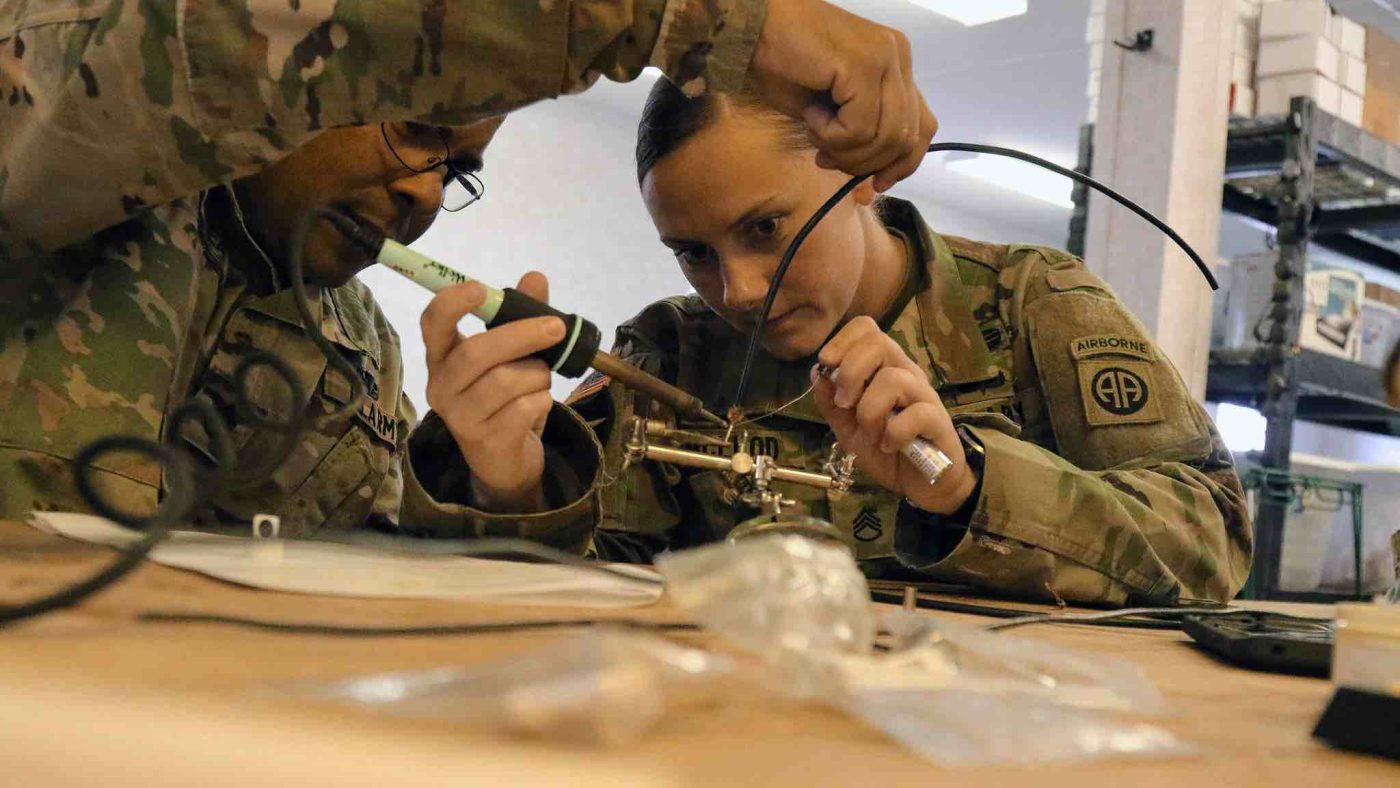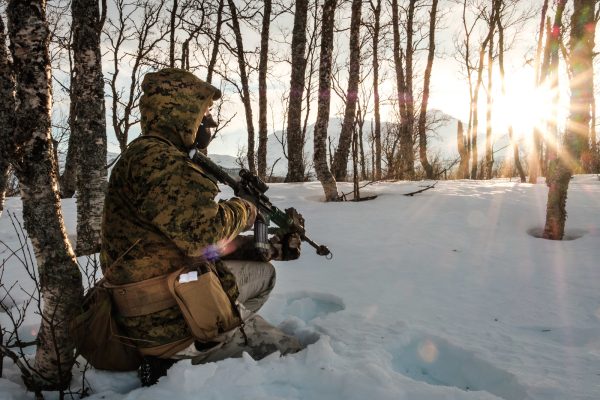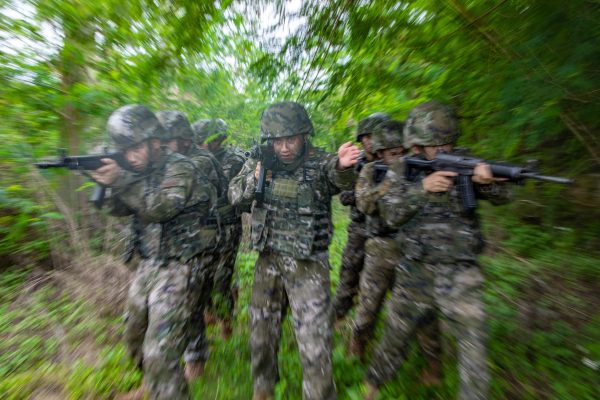Since the Russian annexation of Crimea in 2014, the term hybrid warfare has grown in popularity, but with no agreed definition of what exactly defines a conflict as hybrid. Discussions around the type of fighting mechanisms that Russia used seemed to imply that it was a new way of fighting.
But the use of hybrid mechanisms to conduct war is not new. The novelty is the introduction of digital technologies that lead to an immense number of methods by which threats can travel, including the size of the “frontline” that needs to be defended and the ease with which various threats can occur at the same time.
Thanks to emerging technologies, the battlefield is highly complex with a high rate of change to that complexity, as technology develops and new digital systems are introduced. To meet the changes that the hybrid future presents, militaries and organizations must move towards flexibility and agility. They also must ensure that personnel have the skills to achieve this new way of working. Soldiers operating on the battlefield are being required to operate with greater autonomy and to take on more command responsibilities. This means an increasingly heavy cognitive load, and quick learning, during operations, as well as between them. Military personnel will be expected to update their knowledge at the same pace that the battlefield evolves, but also as the technology is updated.
To address this complexity and the cognitive loads, many militaries are looking to emerging technologies like artificial intelligence (AI) and the augmentation of servicemen and women through technological implants or pharmacological enhancement. In their focus on these high-tech solutions, however, militaries risk overlooking the more obvious, yet vital ways in which personnel must be supported through improved educational practices, including simple-tech solutions.
These must be applied across both new subject areas and existing educational subjects, which tend to be taught through traditional methods. Updating the way in which military education is delivered is key to achieving effective human-machine teaming, human-human teaming, and the operational creativity needed to adapt to the rapidly changing, complex battlefield they will face.
The focus must be on how all military education can adapt to this cognitive demand, and continue to enable creativity and adaptability on the battlefield. This means ensuring that soldiers are given multidisciplinary knowledge that does not overemphasize computer skills over non-technological knowledge such as military history, culture, and linguistics.
In order to be creative and achieve effective autonomy, military personnel will need a vast amount of multidisciplinary knowledge, both military-specific and non-military-specific. This requires continuous life-long learning, both during and between deployments. Lessons learned need to be shared across organizations more swiftly, the implications of tech updates shared quickly and made comprehensible to users, and all done securely, as the technologies used for education can also be used as a threat.
Simply put, military education needs to adapt to the way in which the soldiers educate themselves, and they deal with the cognitive load placed on them. For example, providing digital tools that allow them to take control, and when and where they learn, but also allow them to personalize the speed at which they learn. It would also broaden the education they have access to. Since they are expected to know more, and update their knowledge at the speed at which technology updates, the traditional classroom may not be the best option.
The recent findings by Bellingcat that military personnel used an insecure digital flashcard tool to learn nuclear protocols (leading to a security breach that could identify where nuclear warheads were stored across Europe) is a sign that military education may not be keeping up with the changing environment, especially as militaries are increasingly composed of people with extensive digital knowledge. Coupled with the 2018 Strava security breach, in which U.S. military personnel unwittingly revealed secret bases through the use of sports watches, this indicates that service people have continued, and will continue, to use familiar digital tools from the civilian world for managing and learning about their health, and managing their learning processes in their military lives.
Both of the tools involved were used by personnel to meet the demands placed on them by the job. One does not have to think too hard to realize what other publicly available tools may be in use and which may also lead to security breaches. For example, language apps such as Duolingo or Babbel. The solution is not to ban the use of apps, but rather look at how militaries can ensure that they are used securely, whether this is through partnerships with app companies, or developing in-house apps, or ideally both.
Although military leaders have acknowledged the educational opportunities that technologies such as virtual reality present for training, the less complex and already commonly available digital tools must not be forgotten. They provide a simple yet significant opportunity to allow service people to take control of their education for the betterment of the military. From what we know about the nature of hybrid threats, and how information operations, cyber operations, and psychological operations are conducted, a failure to focus on this area will open defense organizations to threats. Our increasingly digital-savvy servicepeople are familiar with applications and technologies in their everyday lives, and will employ these unless they have access to secure options.
Digital tooling for education does not have to be done by the military. It is already a booming private sector business, and partnering with existing digital education providers has major advantages. Additionally, digital innovation start-ups are increasing — and so it is key to ensure that initiatives such as the NATO Innovation Fund or those focused on non-traditional civilian-military partnerships prioritize educational technologies.
Although the future battlefield and hybrid threats will be characterized by complex threats countered by complex systems, leaders should not lose sight of the comparatively simple steps that can be taken now. The low-hanging fruit that will enhance tactical and operational superiority by effectively listening to, and addressing servicepeople’s educational needs, must have priority.
Europe’s Edge is CEPA’s online journal covering critical topics on the foreign policy docket across Europe and North America. All opinions are those of the author and do not necessarily represent the position or views of the institutions they represent or the Center for European Policy Analysis.





